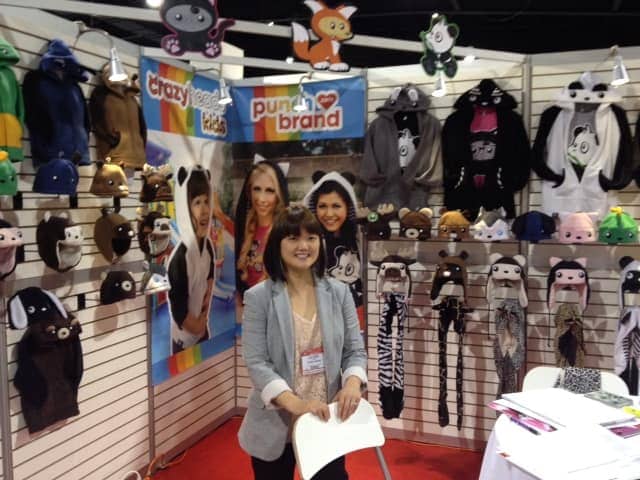When I started my first business Punch Brand, I was a bit of a “shy entrepreneur”. I hid behind my brand and intentionally created the illusion that I was a large, established company. I created a façade that looked somewhat “corporate” and wrote the About Us page in third person “We”; as in “We are a design studio best known for our character-driven lifestyle clothing."
I think I was afraid if I told the truth then people wouldn’t buy my product knowing that it was handmade by a girl on her kitchen table. I believed it would lack the credibility for people to trust its quality even though it was a very well made product.
As I got more comfortable getting my product in front of customers, I started to open up and tell my story of how I got started. I found I could establish a better connection with my customers as well as develop a media presence which led to getting interviews and featured in newspaper articles. Reporters wanted to get to know me and my story, not just that I make products.
Soon I started to get repeat purchases on my site and at conventions. Through years of doing conventions in person and meeting customers face to face, I was able to build relationships and even lasting friendships because they got to know who I am as a person and the story behind my brand.
Here are 7 tips on how you can use stories to connect with your customers.
1. Share the story about how you got started on your journey to developing the product
What is your company’s story? Who are you? Why do you do what you do?
Everyone’s familiar with the story of businesswoman Sarah Blakely, the creator of Spanx and how she created a product out of personal necessity. Another one is author JK Rowling’s incredible story of how she went from a single mother on welfare to a best-selling billionaire. Those stories stick and stay with you for a long time.
2. Tell stories from your customers about the product, how it makes them feel and compliments they’ve gotten from it
Share feel-good stories from your customers. Describe how they use the product. You could even run a contest for your customers to share their photos and stories and how using your product has helped them or made them feel. These will make great testimonials for your site!
3. Write stories about how you came up with a new idea for a product
It could be a piece written about “Why I made this shirt”. You could outline the design process of how you came up with the concept. You could list a step by step of how your product is made. If you have helpers, you could create a profile of the people who make your product. You could give the viewers a peek Inside your studio where the magic happens. You could give a preview of what are you working on and create a little anticipation and excitement for things to come.
4. Highlight a unique feature or benefit of the product
This is a great place to use storytelling on your product descriptions. For example, you could say “You will feel amazing wearing this…. You will feel better knowing that it was produced in an environmentally and socially sustainable way”.
5. Personal stories of your life, travel, events, celebrations, special occasions
People like to know that there’s a real person behind the brand, that it isn’t just some minions running the show. Sharing relevant real-life stories that are in alignment with your brand image, could create that realness and give it that human element that people can relate to.
6. What worked, more importantly, what didn’t work. What did you learn?
We are all human beings and we make mistakes. Sharing stories of epic fails is a way to connect with your customers that you are human, you make mistakes and you learned from them.
7. Stories related to your industry or how you were inspired by something or someone
You are the expert in your industry, therefore share stories that inform and educate customers about trends or latest news in your industry that they would be interested in knowing about. For example, if you are a sustainable fashion designer, you could tell a story about the effects of fast fashion on the planet and that your clothes are produced in an ethical and sustainable manner.
There are many ways you can use story-telling to connect with your customers. With just a little practice, you can start incorporating stories into all touch points with your customers whether it’s on your website, social media, or in person at a show. Stories are a great way to get the conversation started. I would love to hear your story, please share in the comment section below.




